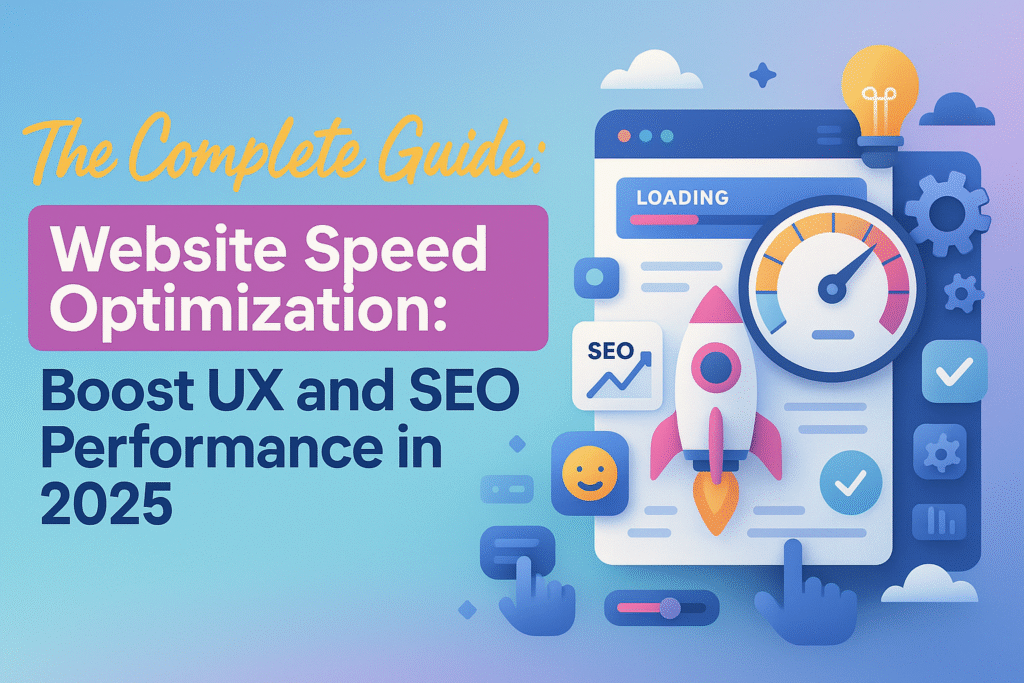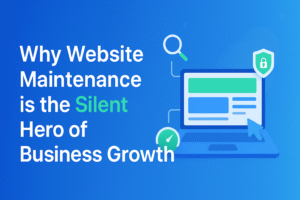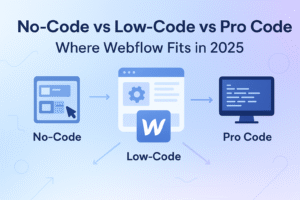In today’s digital-first world, where user attention spans are shorter than ever, website speed plays a crucial role in shaping how people interact with your site. If a website takes more than a few seconds to load, users are likely to abandon it in favor of a faster competitor. This not only affects your traffic and engagement but also impacts your credibility and conversions.
Search engines like Google also factor website speed heavily into their ranking algorithms, especially with the increased focus on user experience in recent updates. That’s why website speed optimization is no longer just a technical task—it’s a strategic necessity. From enhancing user satisfaction to influencing SEO performance in 2025, the speed at which your website loads can determine whether you win or lose potential customers.
In this blog, we’ll break down why fast-loading websites are more important than ever, explore how website speed affects SEO in 2025, and share practical tips for optimizing your site to ensure a better user experience and higher search visibility.
Let me know if you’d like the entire blog rewritten with more depth and expansion on each section too.
What Is Website Speed Optimization?
Website speed optimization refers to the process of improving how quickly your web pages load on different devices. This includes minimizing file sizes, compressing images, reducing server response times, and using content delivery networks (CDNs). In short, it’s about making your site faster and more efficient.
Why does it matter? Because faster websites are proven to deliver better results — more page views, lower bounce rates, and higher conversions.
In 2025, users have no time for slow pages, and search engines like Google are prioritizing websites that meet performance benchmarks.
The Link Between User Experience and Website Speed
User experience and website speed are deeply connected. Even the most visually appealing site can lose visitors if it loads slowly. Studies show that just a one-second delay can reduce user satisfaction, lower page views, and hurt conversions.
Today’s users expect fast, seamless access to content. In 2025, this expectation is even higher with increasing demand for instant access on all devices. If a site is slow, users may get frustrated and leave. But when your website loads quickly, it feels smooth and professional — keeping users engaged and more likely to return.
Speed directly affects first impressions. Whether on mobile or desktop, a fast site improves navigation, ensures quick interaction, and builds trust. A slow website, on the other hand, can lead to lags, delayed responses, and a poor overall experience.
Fast-loading sites also handle traffic better and maintain performance during peak times, which boosts user confidence. In short, a positive user experience starts with excellent website speed optimization.
In a competitive online space, delivering a fast, user-friendly website is crucial for brand reputation, better engagement, and improved SEO performance in 2025.
How Website Speed Affects SEO in 2025
Search engines, especially Google, prioritize user-centric websites. In 2025, Google’s algorithm places even more emphasis on performance metrics such as Core Web Vitals, which directly measure page load speed, interactivity, and layout stability.
Here’s how website speed affects SEO in 2025:
- Google’s Algorithm Prioritizes Speed
- In 2025, SEO performance depends heavily on how fast your website loads.
- Google’s Core Web Vitals and mobile-first indexing favor websites that deliver a smooth, quick experience.
- High Bounce Rates Hurt Rankings
- Slow websites frustrate users, leading to high bounce rates and low engagement.
- This behavior tells Google your content isn’t helpful, harming your search visibility.
- Website Speed Optimization Helps Retain Visitors
- A fast website keeps users engaged, increasing time spent on site and interaction.
- This contributes to better user experience and website speed alignment.
- Improved Crawl Efficiency
- Search engine bots prefer websites that load quickly and respond fast.
- Website speed optimization ensures more pages are crawled and indexed properly.
- Boosts Mobile SEO
- With most searches coming from mobile, fast-loading websites perform better in mobile rankings.
- Optimizing for speed across all devices gives your site a competitive edge.
- Direct Impact on Google Rankings
- Website speed and Google ranking 2025 are closely tied.
- The faster your site, the better your chances of ranking on the first page.
- Better UX Means Better SEO
- Google’s AI-powered algorithms measure UX through performance signals.
- A smooth experience improves trust and search performance at the same time.
- Helps Outrank Competitors
- Competitors investing in site speed optimization for better UX will likely outrank slow-loading pages.
- To stay ahead, consistent speed audits and improvements are essential.
Effects of Slow Website Speed on SEO and Conversions
Let’s break down the consequences of poor performance:
- Higher Bounce Rates
- Slow-loading websites frustrate users, causing them to leave without exploring.
- This increases your bounce rate — a signal to search engines that users aren’t finding your site valuable.
- Lower SEO Rankings
- Google and other search engines prioritize websites that load quickly and offer smooth experiences.
- Slow websites often struggle to rank well, especially in 2025 where speed is tightly linked with SEO performance.
- Poor Core Web Vitals Performance
- Metrics like Largest Contentful Paint (LCP) and First Input Delay (FID) are crucial for ranking.
- If your website performs poorly on these, it signals bad UX and hurts your SEO.
- Reduced User Engagement
- Users are less likely to read more pages, watch videos, or complete actions on slow websites.
- A fast site encourages deeper engagement and longer sessions.
- Drop in Conversion Rates
- Studies show that even a 1-second delay can reduce conversions by up to 7%.
- Whether it’s sales, sign-ups, or downloads, slow speed leads to fewer completions.
- Negative Brand Perception
- Slow websites feel outdated and unreliable to users.
- This damages trust, especially for new visitors who may never return.
- Users Prefer Competitors
- With so many options available online, users don’t wait — they leave for faster alternatives.
- This results in lost traffic and revenue to competitors with faster, optimized websites.
- Mobile Experience Suffers
- Most users now browse on mobile devices, where speed matters even more.
- A sluggish site can ruin the mobile experience and lead to higher abandonment rates.
- Lower ROI from Marketing
- Driving traffic with ads or SEO is expensive — but if users bounce due to slow speed, your ROI drops.
- Speed optimization helps convert that traffic more effectively.
How to Improve Website Speed for Better UX and SEO
Improving your website’s loading time isn’t just a technical fix — it’s a smart business move. Here’s how you can make your website faster and boost both user experience and SEO in 2025:
- Minimize HTTP Requests
- Reduce the number of elements (images, scripts, CSS files) loaded on each page.
- Fewer requests = faster loading time = better UX and SEO performance.
- Use a Content Delivery Network (CDN)
- CDNs store your website files on multiple servers around the globe.
- Visitors get data from the nearest server, significantly reducing website loading time and boosting global performance.
- Compress and Optimize Images
- Heavy images are one of the main causes of slow websites.
- Use modern formats like WebP, compress without losing quality, and resize images to fit actual display dimensions.
- This directly improves website speed optimization and keeps visuals sharp for users.
- Enable Browser Caching
- Let users store parts of your site in their browser temporarily.
- On return visits, pages load almost instantly, enhancing user experience and website speed dramatically.
- Minify CSS, JavaScript, and HTML
- Remove unnecessary characters, spaces, and comments from code files.
- This reduces file size and improves site speed optimization for better UX.
- Use Lazy Loading for Images and Videos
- Only load content when it becomes visible to the user.
- It reduces initial load time and creates a smoother scrolling experience.
- Upgrade Your Hosting Plan
- Shared hosting might slow you down during high traffic.
- Switch to a VPS or cloud hosting provider for better performance and reliability.
- Implement Server-Side Caching
- Pages are pre-loaded and stored on the server to be served faster.
- This reduces the load on your server and enhances website speed and Google ranking 2025.
- Use Lightweight Themes and Plugins
- Avoid bloated themes or unnecessary plugins that slow your site.
- Clean, fast themes lead to faster performance and better search visibility.
Future Trends: Website Speed and SEO Performance in 2025
Looking ahead, here’s how SEO performance in 2025 is evolving:
- AI-powered page speed tools will automate improvements.
- 5G and faster mobile networks will raise user expectations.
- Google’s ranking signals will weigh user satisfaction more heavily than ever.
As mobile-first indexing and AI continue to dominate the SEO landscape, there’s no excuse for a slow website. Speed is a baseline requirement.
🧰 Tools to Monitor and Improve Website Speed
Want to check your website’s speed and make it better? Use these tools:
- Google PageSpeed Insights
- GTmetrix
- Pingdom Tools
- Lighthouse (Chrome DevTools)
These platforms offer detailed breakdowns to help you fine-tune your site speed optimization for better UX.
✅ Conclusion: Speed is UX. UX is SEO.
If you want to compete in 2025 and beyond, you must prioritize website speed optimization. A lightning-fast website not only makes visitors happy but also gives you a competitive edge in search rankings.
Key Takeaways:
- Faster websites lead to better UX and higher SEO performance
- Website loading time impacts Google rankings and conversion rates
- Optimizing your website is a smart investment for growth in 2025











